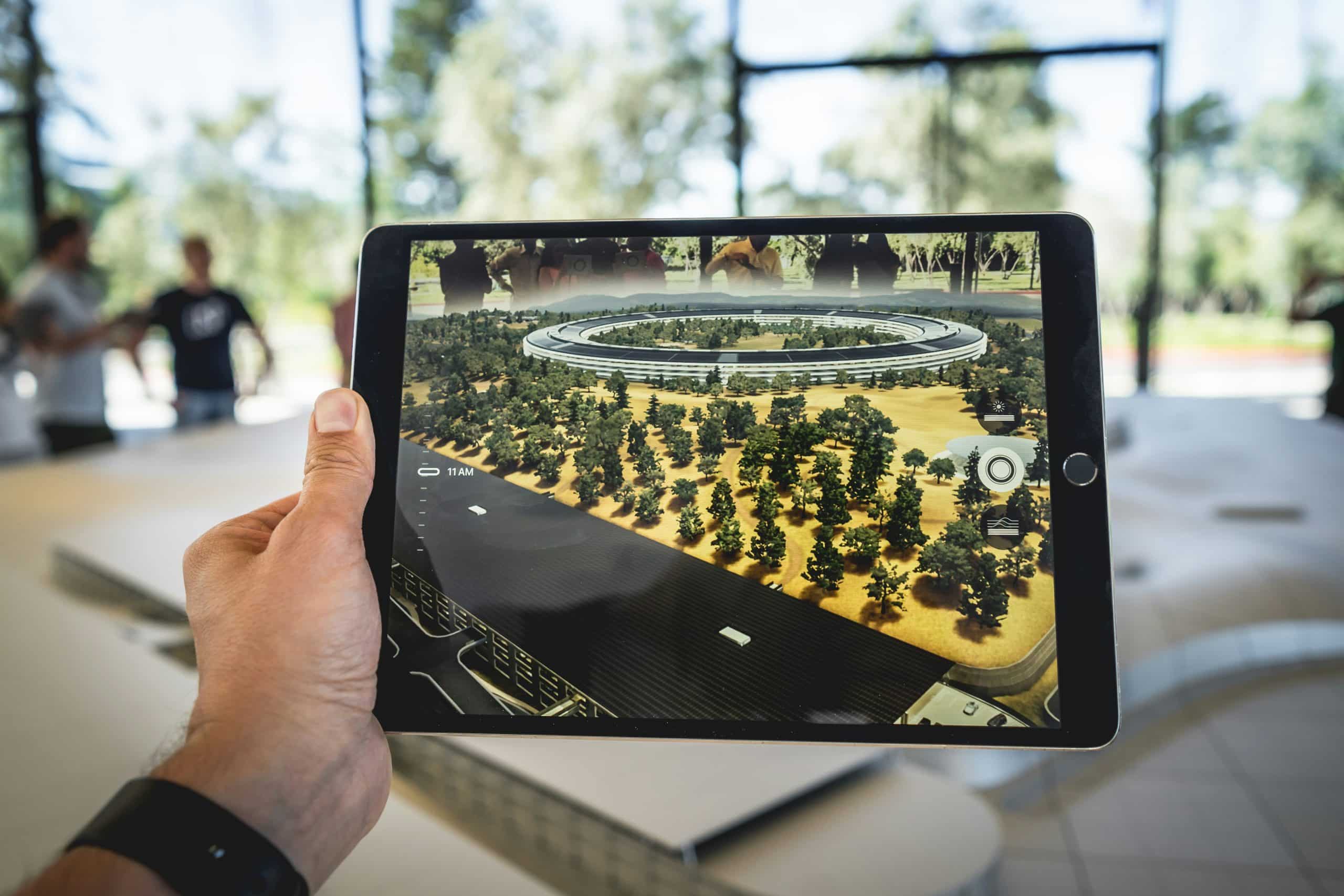How will augmented reality change the way we work?

As technology continues to evolve, we are constantly trying to adapt and maximize the potential of these advancements. One such technology that is rapidly transforming the way we work is augmented reality (AR). If you are considering incorporating augmented reality into your business, it’s important to understand how it will change your work experience, training programs, and overall business operations.
Augmented Reality: Changing Work Experience
Imagine a work environment where you can interact with digital content in the real world. This is precisely what augmented reality offers. AR superimposes digital data onto your physical surroundings, providing an enhanced version of reality.
Cela peut vous intéresser : Wedding Photographer in Provence: Your Unique Moments
Regardless of your industry, AR can improve your work experience. For instance, in architecture and design, architects can use AR to visualize their designs in a real-world context before they are built. Similarly, in the retail industry, customers can use AR to try on clothes virtually, saving time and enhancing their shopping experience.
Not only does AR enhance the work experience, but it also provides businesses with valuable data. By tracking how people interact with AR content, businesses can gather insights about their customers and employees, leading to more effective business decisions.
Cela peut vous intéresser : Which necklaces to choose according to your dress?
Incorporating Augmented Reality into Training Programs
Training programs are crucial for businesses to ensure their employees are equipped with the necessary skills and knowledge. With augmented reality, these training programs can be revolutionized.
AR can make training more interactive and engaging. For example, a mechanic can use AR glasses to see a digital overlay of an engine, with instructions on how to repair it. This not only makes the training more realistic but also allows trainees to practice in a safe environment.
Furthermore, AR can tailor training programs to individual needs. If a trainee is struggling with a particular topic, AR can provide additional resources or exercises to help them improve. This personalized approach to training can lead to more effective learning outcomes.
Boosting Business Operations with Augmented Reality
Augmented reality has the potential to significantly boost business operations. In logistics, for example, AR can be used to optimize warehouse operations. Warehouse workers can use AR glasses to locate items more quickly and accurately, reducing errors and improving efficiency.
In customer service, AR can be used to provide real-time assistance to customers. For instance, a customer looking to assemble a piece of furniture could use AR to see step-by-step instructions overlaid onto the actual product.
Moreover, businesses can use AR to showcase their products in a more immersive way. For example, a furniture store can use AR to allow customers to visualize how a sofa would look in their living room. This can enhance the customer experience and increase sales.
Designing Content for Augmented Reality
Creating content for augmented reality requires a different approach compared to traditional content design. Designers need to consider how users will interact with the AR content in a real-world context.
For instance, designers need to consider the physical space in which the AR content will be viewed. If the AR content is too large or too small for the space, it will not be effective. Similarly, designers need to consider the user’s perspective. If the AR content is viewed from an awkward angle, it will not provide a good user experience.
Furthermore, designers need to create AR content that is intuitive to use. Users should be able to interact with the AR content naturally, without needing extensive instructions.
The Future of Augmented Reality in the Workplace
While augmented reality is already transforming the way we work, it’s only the beginning. As AR technology continues to advance, its applications in the workplace will only grow.
One potential future use of AR is remote collaboration. With AR, remote teams could work together in a shared virtual space, making remote work more interactive and engaging.
Additionally, as AR becomes more commonplace, we could see a shift towards AR-first design. Instead of designing for traditional screens, designers would create content primarily for AR, considering the unique opportunities and challenges that AR presents.
AR also has the potential to revolutionize data visualization. Instead of viewing data on a flat screen, businesses could use AR to view data in 3D, making it easier to understand and analyze.
In conclusion, augmented reality is set to revolutionize the way we work. From enhancing the work experience to improving training programs, boosting business operations, and changing how we design content, AR offers a range of exciting opportunities. As businesses continue to adopt and adapt to this technology, the possibilities are endless.
Incorporating Artificial Intelligence in Augmented Reality
The leap into the future of work is set to be powered by two key digital transformation technologies: augmented reality and artificial intelligence. By integrating these two technologies, businesses can create a dynamic and responsive work environment that evolves in real time, offering a powerful tool to enhance productivity and performance.
In the context of augmented reality, artificial intelligence can be used to make AR experiences more intuitive and personalised. For instance, AI can be used to analyse the user’s behaviour and preferences, and then adapt the AR content accordingly. This could include adjusting the size or position of the digital overlay, or providing additional information based on the user’s needs.
Additionally, AI can be used to create more immersive and realistic AR experiences. For example, AI algorithms can be used to generate realistic 3D models in AR, allowing users to interact with virtual objects as if they were real.
Artificial intelligence also plays a key role in content management for augmented reality. AI algorithms can be used to classify and organise AR content, making it easier for users to find and interact with relevant content.
Furthermore, AI can enhance the use of AR in training programs by providing real-time feedback and guidance. For example, if a trainee is using AR glasses to practice a task, AI can analyse their performance and provide instant feedback, helping them to improve their skills more efficiently.
Extended Reality: The Blend of AR, VR, and MR
As we move towards the future, we’re witnessing the rise of extended reality, an umbrella term that encompasses augmented reality (AR), virtual reality (VR), and mixed reality (MR).
Virtual reality offers a completely immersive digital experience, shutting out the real world. It requires a user to wear a headset that tracks their motion and changes the user’s view accordingly. This technology is already being used in industries such as gaming and education.
On the other hand, mixed reality is a blend of AR and VR, where physical and digital objects co-exist and interact in real time. Users can interact with the digital world while still being aware of their physical environment.
These immersive technologies, when combined, provide a continuum of experiences that can change the way we work. For instance, an engineer could use MR to visualise a complex machine part in 3D, rotate it to see it from all angles, and even dissect it to understand its inner workings, all while still seeing their actual surroundings.
As these technologies continue to evolve, we can expect to see more businesses adopting extended reality solutions to enhance their productivity, improve customer experience, and drive innovation.
Conclusion
The dawn of augmented reality in the workplace is no longer a distant prospect – it’s happening now. AR is delivering digital experiences that are transforming the way we work, learn and interact. From the integration of artificial intelligence to the rise of extended reality, AR is leading a digital revolution that promises to make our work more efficient, engaging, and enjoyable.
Whether it’s through enhancing training programs with interactive AR content, improving customer experience with immersive product demonstrations, or boosting productivity with smart glasses, AR is set to change our work realities in profound ways.
And as we continue to innovate and push the boundaries of what’s possible with AR and related technologies, one thing is certain: the future of work will be a reality augmented by digital experiences. While the path ahead is filled with challenges and uncertainties, it also presents exciting opportunities for businesses ready to embark on this journey of digital transformation. In the end, those who adapt, innovate, and embrace these emerging technologies will be the ones who thrive in the future of work.
